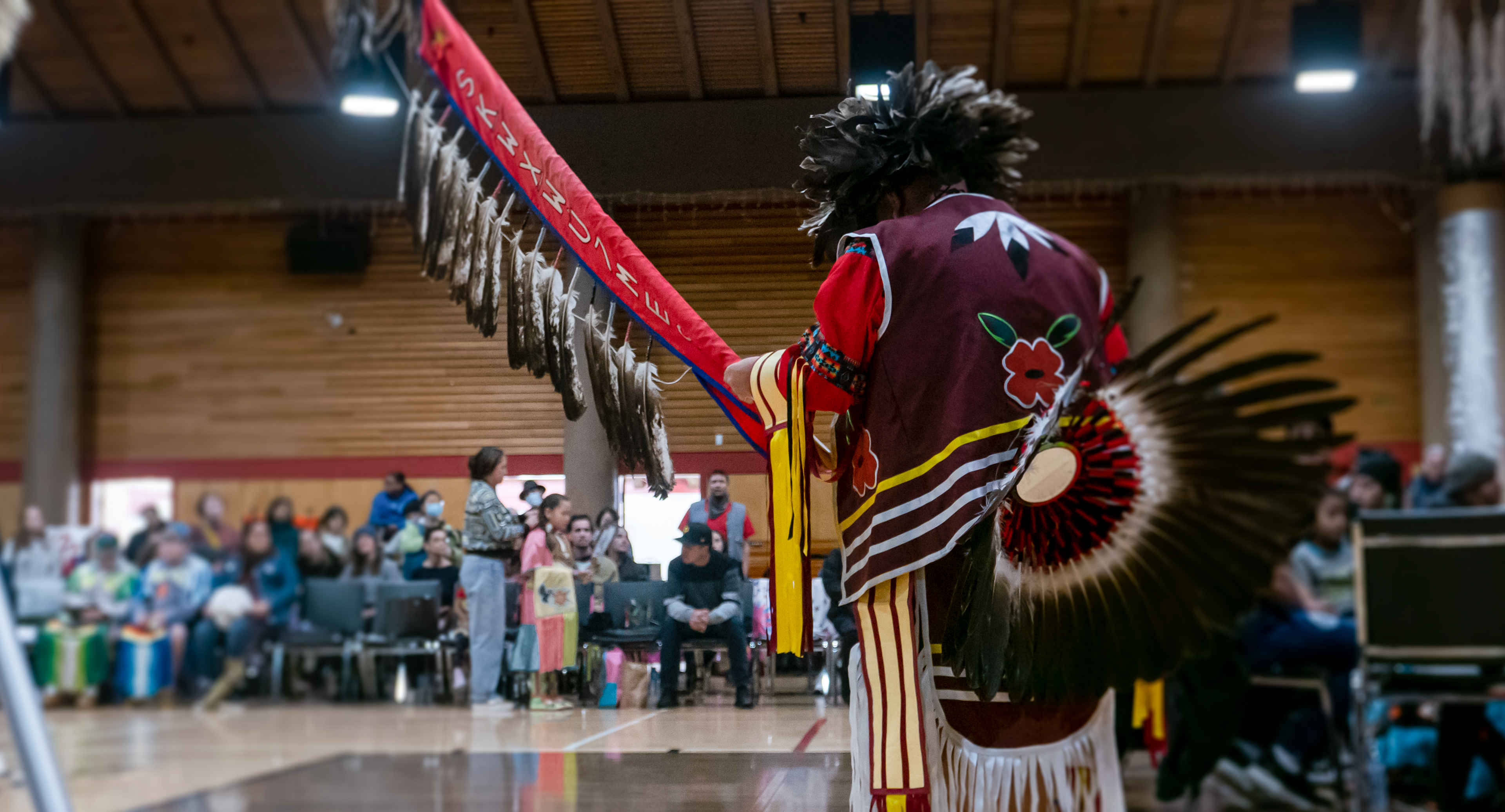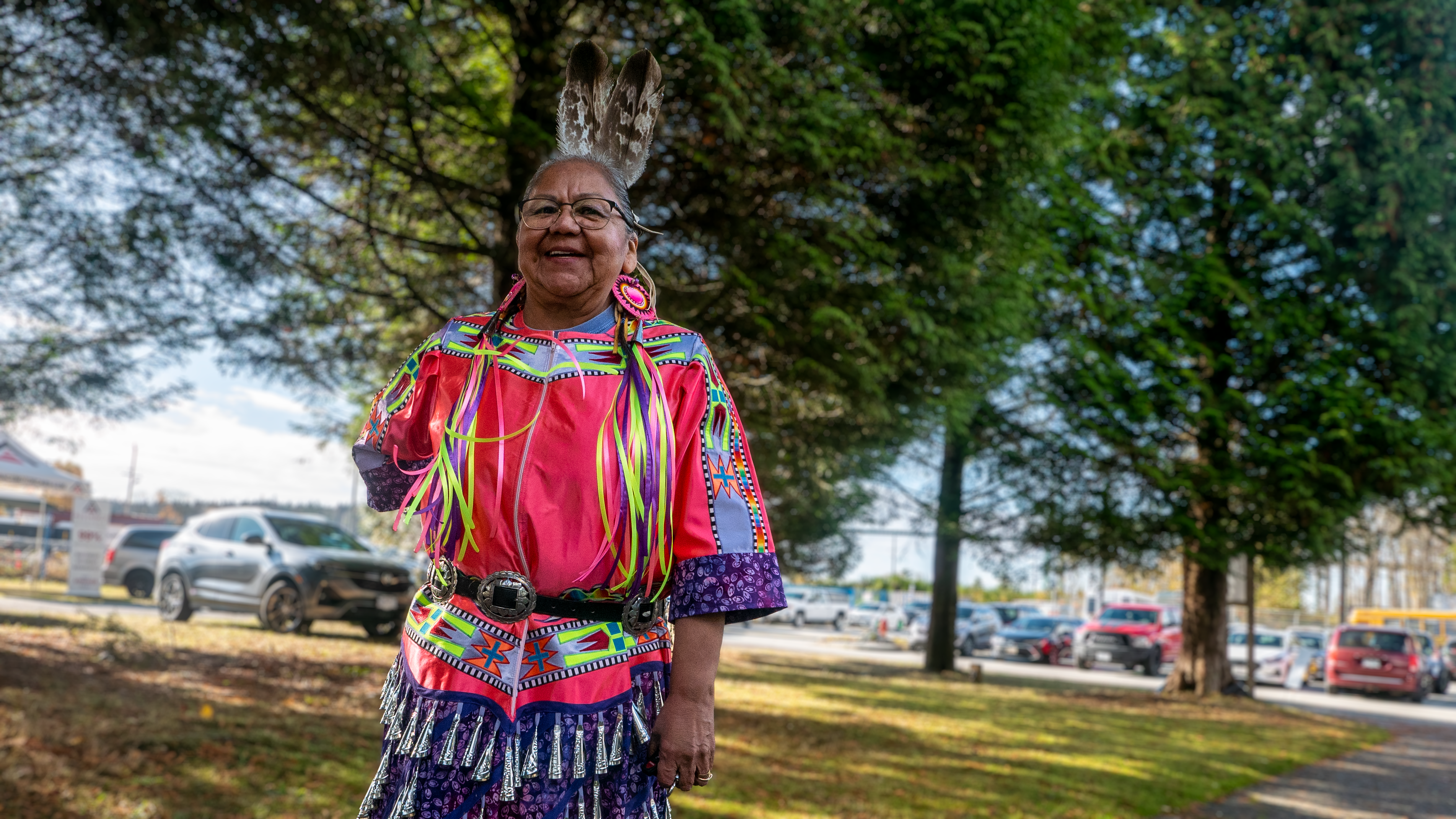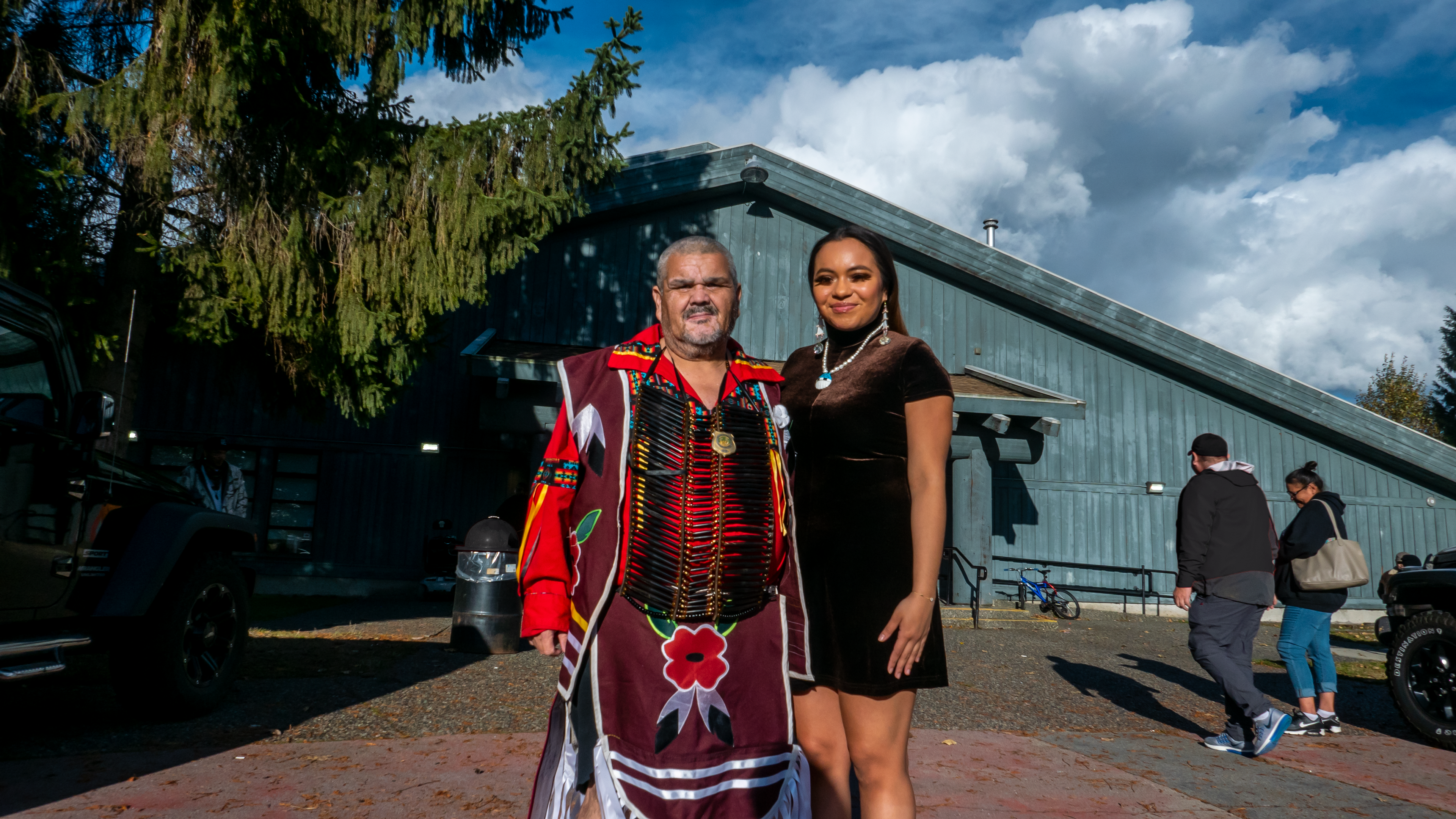Veterans gather for Squamish Nation Powwow
Days before Indigenous Veterans Day, Lower Mainlanders gathered for a powwow hosted by Squamish Nation at the Chief Joe Mathias Centre.
On a sunny Saturday in West Vancouver hundreds gathered at a powwow to celebrate Indigenous veterans.
In advance of Indigenous Veterans Day on Nov. 8, the Squamish Nation opened its doors for two days of dancing and ceremony to honour Indigenous veterans and those lost by the community. The event has returned after three years, having been cancelled twice due to COVID-19 restrictions.
This year’s powwow was particularly poignant for Tony Discon, the event’s organizer, as he was chosen to carry the Squamish Nation eagle staff for the first time.
Discon has organized the event since 2016, and shows his respect for the veterans even through the poppies which adorn his traditional regalia. The decision to hold it a few days early, Discon said, allows veterans and elders time to visit the cenotaph in Totem Park, Squamish on Nov. 8.

This year also marks the organizers’ first powwow without Tenàlh-t Gloria Nahanee, a pillar of the community and the late head of the powwow committee.
Even if it wasn’t for Veterans Day, we would still honour the ones that were dancers prior to passing on. We would honour them to carry the traditions on and try not to change the way our people are. — Tony Discon

Among the veterans honoured at the event was Jamie Thomas, who served as TOW gunner for U.S. Marine Corps from 1986 to 1990. At the powwow, Thomas carried the American flag to acknowledge his service and tours in Central and South America.
As a Canadian serving in the U.S. military, one of Thomas’ most striking memories was crossing paths with the Canadian Airborne Regiment at a camp in French Guiana.
The Canadian Airborne, who’s an elite fighting force as well, got out of our way. They stood off the sidewalk, allowed us to pass and actually gave us a hand salute. So it was kind of an interesting thing for me to see the Canadian Airborne get out of the way of the United States Marine Corps. And it was a real sign of respect at the time. So it’s something that stuck with me for all this time. — Jamie Thomas
This display drew Thomas’ attention to the contrast between his “ragtag” company and the soldiers from his home country, who fit “a specific criteria.”
“They’re all six foot five plus, mainly Caucasian and all dressed to a tee,” said Thomas.
The show of respect was important for Thomas, who remembered his father’s experience after serving in the Royal Canadian Navy during the Second World War.

“It was just ‘goodbye, see you later’”, said Thomas, of the treatment of returning Indigenous veterans. He believes Canada failed to acknowledge their service.
Thomas added that when Indigenous veterans, like his father, marched in Remembrance Day services, “they were behind the Girl Scouts”.
The first time Indigenous veterans were allowed to lay wreaths during Remembrance Day events was in 1995 — five years after the end of Jamie Thomas’ service.

Lucy Barney, an elder of T’it’q’et Nation, has been powwow dancing all her life.
Barney took part in many of the women’s dances and was one of the few “Golden Age Ladies” showcased in a memorial dance for Tenàlh-t. She has danced at veterans powwows in previous years.
I love acknowledging the veterans because they fought for our freedom. Many of them served in different areas and I’m just glad that they’re able to be here.
A powwow is a gathering of dancers from around the world. For example, you saw the U.S. and the Canada flag that represents the fact that we do not recognize borders. — Lucy Barney

The dance categories at the Veterans Powwow included space for men’s, women’s, two-spirit people and all ages.
Simsimtko Whitewing said that although the traditional dances each have their own significance, “it could be any category to honour the veterans, any one.”
“It’s so beautiful,” she added. “Especially during the grand entry when everyone’s together.”
Her father, Tony Discon, says she’s been dancing since she was able to walk.
Ever since I was little, I looked up to the older dancers, and I watched them. And it’s just crazy to think that as time goes by I’m now dancing with them in the woman’s age category. So they’re definitely my inspiration. They taught me to dance.
I love that powwows is representation of us native people coming together to honour that we’re still here today as indigenous people after our history, we’re still resilient and strong. And this is a gathering to celebrate that we’re still here. — Simsimtko Whitewing

Discon is proud to have organized an event that is itself “an act of Reconciliation,” encouraging non-Indigenous people to be present and learn. Powwows, he says, are also a way for Indigenous people to pass their teachings down to the next generation.
Having to run a powwow. You’re at beck and call of everybody. But I enjoy this. It’s not about me. It’s about those tiny little voices that I hear in the background, the children laughing.
This is where our teachings are taught, is through those younger ones. So that when we pass on, they’ll continue that tradition. — Tony Discon
